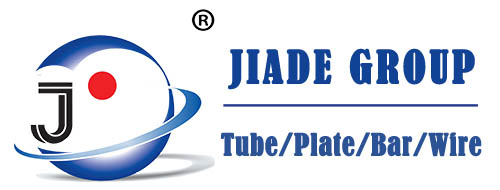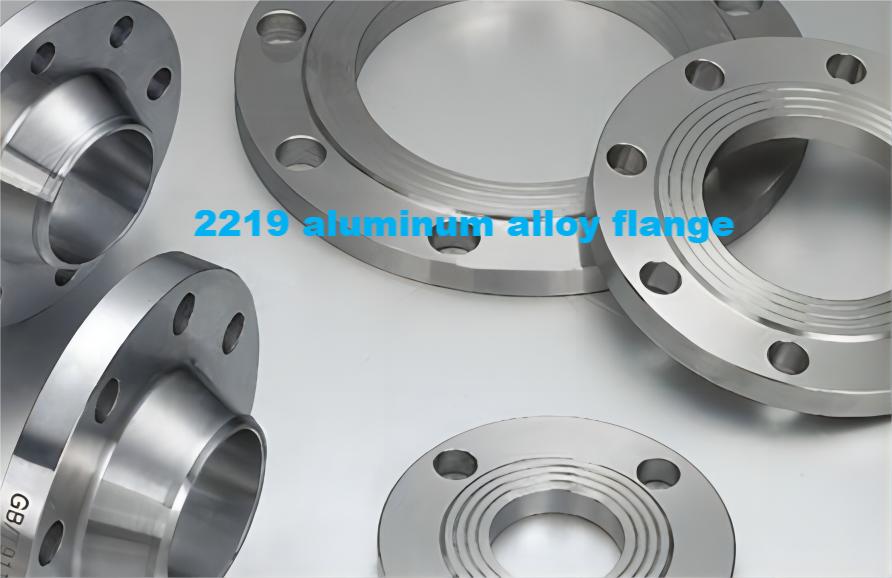In order to solve the problems of
2219 aluminum alloy flange forgings, such as coarse grain, vertical fiber direction and structural stress direction, the effect of forging process on its structure and properties was studied by means of room temperature tensile test and optical microscope. The results show that the single upsetting process has little effect on the structure and properties; The multi-directional forging process can effectively break the fiber structure of the bar and reduce the anisotropy of the
forging. For all kinds of
forging processes formed at one time under high temperature, the grain size of forgings reaches millimeter level; When the deformation is finished at a lower final forging temperature, the microstructure of the forging can be significantly refined and homogenized; The 2219 aluminum alloy flange forgings with uniform structure and fine grain can be obtained by using the two upsetting and one drawing deformation process with lower final forging temperature, and the radial elongation of the forgings is 57% higher than the axial elongation, which significantly improves the reliability of the welding structure.
0. Introduction
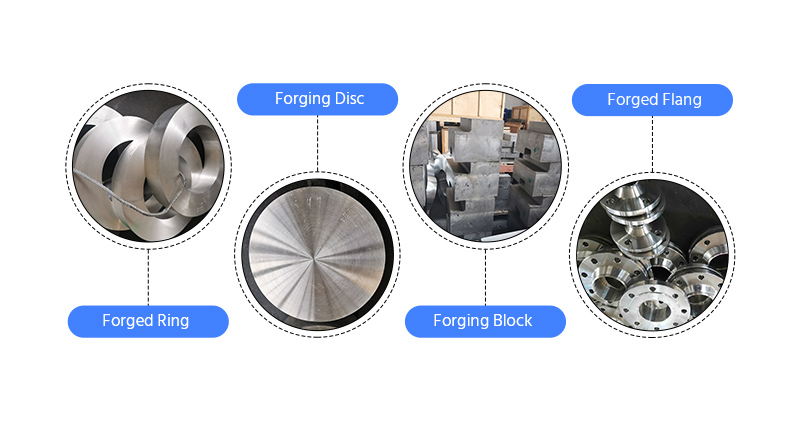
2219 aluminum alloy is a high-strength weldable aluminum alloy with the advantages of good corrosion resistance and low temperature toughness. It is the main structural material of the new generation of carrier rocket tank. The rocket propellant tank also bears the radial, axial pressure, bending moment and other forces while storing low temperature liquid fuel. The requirements for the structure and mechanical properties of its components are extremely strict. The tank bottom is welded by
2219 aluminum alloy transition ring, melon flap and flange. It is an important pressure bearing structure of the tank. The stability of its welded structure determines the overall pressure bearing level of the rocket tank. At present, for 2219 aluminum alloy transition ring, Zhang Wenwen have studied the blooming process of large size 2219 round ingots; Zhang Manman studied the effect of hot deformation parameters on the as-cast microstructure of 2219; Zhang Yun studied the evolution of the second phase Al2Cu during deformation and heat treatment. For 2219 aluminum alloy melon petal, Liu He and Sun Xun studied the creep forming technology and fracture behavior of 2219 sheet metal during forming. In addition, some scholars have carried out relevant research on 2219 aluminum alloy welding and
heat treatment. However, there is little research on the forging process of
2219 aluminum alloy flange and the factors affecting the structure and properties, which is insufficient to provide a theoretical basis for the engineering production of products.
There were two quality problems in the manufacturing process of a new type of launch vehicle. One was the cracking at the weld of the manhole cover flange during the air-tight inspection of the secondary hydrogen tank; Second, after the oxygen delivery flange of the primary oxygen tank is welded, there are linear defects on the side of the weld near the flange forging during the X-ray inspection. See Fig.1 for the metallographic structure of the weld zone. The welded flange structure at the bottom of the tank is formed by butt welding of melon flap and flange or by butt welding of flanges of different specifications. The melon flap is formed by creep aging of 2219 aluminum alloy plate, and the flange is forged from 2219 aluminum alloy bar and then machined. At present, the welded flange structure has such problems as unequal strength on both sides of the welded joint, large difference in structure, coarse grain on the side of the flange forging and the fiber direction perpendicular to the stress direction of the structure, so it is easy to fracture on the side of the flange forging when under pressure. Even if both sides of the butt weld are flange forgings, the performance fluctuation and structure difference are often large due to different specifications, which affects the stability of the welded structure. In order to solve the problems of the 2219 aluminum alloy flange forgings used for welding, such as coarse grain size, vertical fiber direction and structural stress direction, this paper carries out a research on the 2219 aluminum alloy extruded bar forging process, and explores the influence of different forging processes on the structure and properties of the flange, so as to improve the reliability of the welding structure, with a view to improving the overall bearing level of the rocket tank.

Fig.1 Metallographic structure of weld zone
1. Test materials and methods
The test raw material is 2219 aluminum alloy bar, with the specification of Φ 150mm × 245mm, the metallographic structure of forgings after T852 heat treatment is shown in Figure 2, and the mechanical properties are shown in Table 1. Rm is the tensile strength, Rp0.2 is the yield strength, and A is the elongation. The fiber direction of the raw material is axial, and the grain is long and large, and the size in the length direction is far more than 2000 μm. The mechanical properties of the raw material in the axial direction are better than that in the radial direction. The strength index is slightly higher, and the elongation A is nearly twice higher.
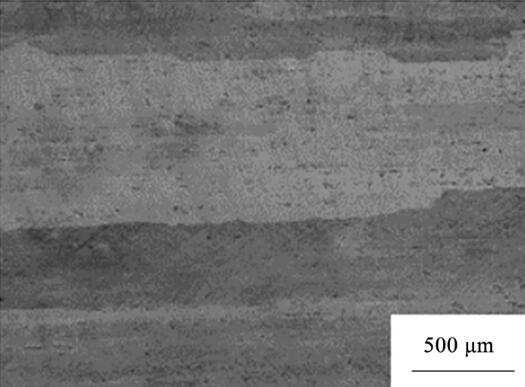
Fig.2 Microstructure of 2219 aluminum alloy bar
Table.1 Mechanical properties of 2219 aluminum alloy bar
| Parameter |
Axial |
Radial |
| Rm/MPa |
Rp0.2/MPa |
A/% |
Rm/MPa |
Rp0.2/MPa |
A/% |
| Value |
434 |
322 |
11 |
422 |
317 |
6 |
Jiade Group Co., Limited implements different forging processes for the bar, and the size is( Φ 220±3)mm × For (105 ± 3) mm forgings, specimens of microstructure and mechanical properties are cut from T852 forgings for forging process test research. The raw materials are heated before forging at 460 ℃/300 min, and six different forging processes are adopted, as shown in Table 2. Forgings are subject to (535 ± 5) ℃/260min/WQ (water cooling) solution treatment, quenching transfer time ≤ 10s, water temperature 25 ℃; 2.5% axial cold pressing within 2h after solution; Aging treatment at (190 ± 5) ℃/10h/AC (air cooling).
Table.2 Forging process
| Process No |
Deformation process |
Final forging temperature/℃ |
Deformation direction |
Forging ratio |
| 1 |
Single upsetting |
442 |
Axial |
2.3 |
| 2 |
Single upsetting – squaring |
438 |
Axial |
3.2 |
| 3 |
Two upsetting and one drawing: upsetting-drawing-heading |
435 |
Axial |
8.3 |
| 4 |
Two upsetting and one drawing: upsetting-drawing-air cooling-upsetting |
380 |
Axial |
8.3 |
| 5 |
Two upsetting and one drawing: upsetting-drawing-air cooling-upsetting |
300 |
Axial |
8.3 |
| 6 |
Four upsetting and three drawing: upsetting-drawing – upsetting-drawing – upsetting-drawing – upsetting |
428 |
Three-way |
19.2 |
Heating before forging is carried out in a box-type resistance furnace; The thermal deformation is completed on a 1t full hydraulic free forging hammer; Solution treatment is carried out in a vertical aluminum alloy quenching furnace; Cold deformation is completed on 1t full hydraulic free forging hammer; The aging treatment is carried out in the trolley type aluminum alloy aging furnace. The microstructure of forgings obtained under different forging processes was observed by Zeiss optical microscope; The mechanical properties of the axial and radial tensile test bars of forgings were tested at room temperature using an electronic universal material testing machine.
2. Test results and analysis
2.1 Effect of deformation mode and deformation amount on microstructure
The microstructure of T852 forging under different deformation modes and deformation amounts is shown in Fig.3. Fig.3a shows the heat-treated structure of the forgings after upsetting along the axial direction of the bar, with the deformation of 57%. It can be seen that the fiber direction is still along the axial direction, the grain is in the shape of long strip, and the size in the length direction is greater than 2000 μ m. Width direction is 200-600 μ m. The grain aspect ratio is greater than 4. Fig.3b shows the heat-treated microstructure of the forgings after axial upsetting-square-rounding deformation along the bar. After increasing the squared deformation, although the deformation is slightly increased, the fiber direction is still obviously along the axial direction, and the grains are still in the shape of long strips, which is similar to the microstructure of the forgings obtained from raw materials and process 1. It can be seen that the forging process of single upsetting can not change the fiber direction and grain shape and size of the bar. This is because only one upsetting deformation is carried out at 460 ℃, the deformation temperature is high and the deformation amount is insufficient, the atomic diffusion speed is fast, the dislocation movement is accelerated, the dislocation of different numbers is constantly offset, and the dynamic recovery occurs. The distortion generated by deformation can be consumed, which is not enough to produce static recrystallization in the subsequent heat treatment process, Therefore, the structure of the original bar remains until the forging.
Fig.3c shows the heat-treated structure of the forging after two upsetting and one drawing along the bar axis. It is found that the directivity of the structure is weakened and the grain presents irregular shape, but the grain size is large and the length direction is greater than 1500 μ m. Width direction is 500 μm. Fig.3d shows the heat-treated structure of the forging after the bar is deformed by four upsetting and three drawing. The deformation amount is greatly increased by one upsetting deformation in three directions perpendicular to each other. The forging structure has no fiber direction and the grain size is about 800-1000 μm. The forging process of two upsetting and one drawing and four upsetting and three drawing can change the fiber direction and grain shape and size of the bar to a certain extent. Compared with the single upsetting deformation, although the deformation temperature is 460 ℃, the deformation amount of the former is significantly increased. Through deformation, the material flows, thus changing the fiber structure of the material and changing the grain shape. Although the deformation amount of four upsetting and three drawing is large, it is still a deformed structure rather than a recrystallized structure, which means that although large deformation produces more distortion energy, the softening mechanism at high temperature is still dynamic recovery, and the distortion energy is not enough to make the alloy undergo static recrystallization in the subsequent heat treatment process to refine the grain, so the grain size is still close to millimeter level.
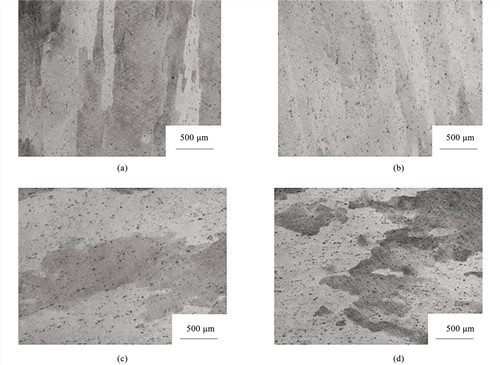
Fig.3 Microstructure of forgings under different forging processes
(a) Process 1 (b) Process 2 (c) Process 3 (d) Process 6
The 2219 aluminum alloy bar is deformed at 460 ℃ at high temperature, and the softening mechanism is dynamic recovery. When the deformation is small, the material flow effect is weak, so the fiber structure and grain morphology of the raw material are retained to the forging, so that the fiber direction of the forging is perpendicular to the stress direction of the welding flange structure. Because the coarse Al2Cu phase will precipitate along the flat grain boundary of the forging during welding, the reliability of the welding structure is greatly reduced, It affects the overall bearing level of the tank. When the deformation is large, the material flow effect is strong, so it can effectively weaken the directionality of the structure and change the grain morphology. Since no recrystallization occurs, the effect of grain refinement is weak. During the welding process, coarse Al2Cu phase will still precipitate along the grain, weakening the reliability of the welding structure. Therefore, the above four processes have not effectively solved the problems of the current 2219 welding flange forgings, such as coarse grain, the fiber direction and the stress direction of the structure.
2.2 Effect of final forging temperature on microstructure
At different final forging temperatures, the microstructure of forgings in T852 state is shown in Figure 4. The initial forging temperature is 460 ℃, and two upsetting and one drawing are used for deformation. Only the final forging temperature is different. According to Fig.3c, its corresponding intermediate cooling is 0 min (one-time forming), and the final forging temperature is the highest. It can be seen that the structure still has certain directionality, and the grain size is the largest, and the length direction size is greater than 1500 μ m. About 500 in width direction μm. Fig.4a corresponds to the intermediate cooling for 5min, followed by the final forging temperature, the structure has no fiber direction, and the grain size becomes smaller, about 500-800 μm. Fig.4b corresponds to the intermediate cooling for 15min, the final forging temperature is the lowest, the structure has no fiber direction, and it is a relatively uniform recrystallized structure, and the grain size is about 300-400 μm.
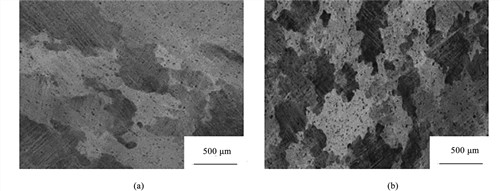
Fig.4 Microstructure of forgings at different final forging temperatures
(a) Process 4 (b) Process 5
With the decrease of final forging temperature, the microstructure tends to be uniform and fine, and the directivity decreases. In the process of thermal deformation, the deformation causes the dislocation to accumulate continuously and accumulate distortion energy. At the same time, the thermal activation causes the dislocation to move faster, and the dislocation of different numbers to cancel continuously. At the same time, the formation of sub-crystals and the merging of sub-crystals occur, and the strain hardening and dynamic recovery softening occur at the same time. 2219 aluminum alloy has high stacking fault energy, narrow spreading dislocation, and dislocation slip and climbing are easy to occur. If deformation always occurs in a high temperature range, dynamic recovery will mainly occur; If the final forging temperature is reduced, the alloy can complete partial deformation at lower temperature, introduce dislocation and other defects through medium-temperature deformation, accumulate more distortion energy, thus providing nucleation driving force for the static recrystallization process in the subsequent heat treatment process, and achieve the purpose of uniform structure and fine grain.
The forging deformation of 2219 aluminum alloy bar can reduce the final forging temperature by hollow cooling for a certain time during the deformation process, which can significantly reduce the directionality of the structure, and achieve the goal of uniform structure and fine grain. The structure forging obtained by the process with the lowest final forging temperature 5 has no fiber direction and uniform and fine grain (Fig.4b), which shows that this process can effectively solve the problem of the current 2219 flange forging with coarse grain The fiber direction is perpendicular to the stress direction of the structure, so as to significantly improve the reliability of the welded structure and improve the overall bearing level of the tank.
2.3 Effect of deformation mode and deformation amount on mechanical properties
See Table 3 for mechanical properties of forgings in T852 state under different deformation modes and deformation amounts. With the single upsetting process, the axial elongation decreases slightly and the radial elongation increases slightly, but the properties are similar to those of the raw material. The fiber direction and grain morphology of the forgings in Fig.3a and Fig.3b are similar to those of the raw material. With the process of two upsetting and one drawing, the axial elongation is further reduced, the radial elongation is increased, and the two-way plasticity index is relatively close, corresponding to the weakening of the directionality of the structure in Fig.3c, and the length-width ratio of the grain is reduced; The four-upsetting and three-drawing process is adopted. Because the upsetting deformation with similar deformation amount is carried out in three directions perpendicular to each other for one time, the axial and radial strength and plasticity indexes are similar, and the two directions are nearly isotropic. The corresponding 3d structure has no fiber direction, and the grain shape is irregular.
After the bar is forged and deformed, its axial strength and plasticity index have decreased, while the radial strength index has little change, and the plasticity index has increased. This is because the deformation makes the material flow and weakens the directionality of the raw material structure. With the gradual complexity of the deformation mode and the increase of the deformation amount, the grain morphology gradually changes from the elongated grain with a large aspect ratio to the irregular grain, and the fiber direction disappears. The material structure determines the properties, and the anisotropy of the final forging weakens. After four upsetting and three drawing, the axial and radial performance indexes are similar.
Table.3 Mechanical properties of forgings under different forging processes
| Process No |
Axial |
Radial |
| Rm/MPa |
Rp0.2/MPa |
A/% |
Rm/MPa |
Rp0.2/MPa |
A/% |
| 1 |
406 |
304 |
10 |
419 |
321 |
6 |
| 2 |
425 |
316 |
9.5 |
428 |
320 |
7.3 |
| 3 |
408 |
300 |
8.3 |
425 |
324 |
7.5 |
| 6 |
423 |
316 |
9.5 |
424 |
312 |
10 |
2.4 Effect of final forging temperature on mechanical properties
See Table 4 for mechanical properties of forgings in T852 state at different final forging temperatures. The initial forging temperature is 460 ℃, and the deformation process is two upsetting and one drawing. Only the final forging temperature is different, and the mechanical properties of the forgings differ greatly, mainly in the plastic index. Process 3 with the highest final forging temperature has similar axial and radial plasticity indexes. As the final forging temperature decreases, the axial elongation decreases and the radial elongation increases. The fiber direction of the original bar is along the axial direction, and the axial size of the grain is much larger than that of the radial direction. Multiple upsetting deformation makes the material deformation more uniform, weakens the directionality of the axial structure, and gradually forms the radial fiber direction.
Table.4 Mechanical properties of forgings under different final forging temperatures
| Process No |
Axial |
Radial |
| Rm/MPa |
Rp0.2/MPa |
A/% |
Rm/MPa |
Rp0.2/MPa |
A/% |
| 3 |
408 |
300 |
8.3 |
425 |
324 |
7.5 |
| 4 |
418 |
312 |
7.5 |
420 |
316 |
9.8 |
| 5 |
417 |
313 |
7 |
417 |
301 |
11 |
The final forging temperature of process 5 is the lowest, and the fiber direction of the forging in the corresponding figure 4b is not obvious, and its structure is uniform, the grain size is fine, and the axial and radial strength indexes are equivalent. The plastic index is 57% higher in the radial direction than in the axial direction, and the radial direction is the stress direction of the 2219 aluminum alloy flange structure. This process can solve the problems of the current 2219 aluminum alloy flange forgings, such as large grain size, the fiber direction is perpendicular to the stress direction of the structure, and the radial elongation is low, Thus, the reliability of the welded structure is significantly improved and the overall bearing level of the tank is improved.
3. Conclusion
- (1) The bar has obvious axial fiber structure. The forging process of single upsetting cannot change the fiber structure direction, grain size and morphology, and has little effect on the structure and properties of the forging.
- (2) The forging process of two upsetting and one drawing, four upsetting and three drawing can effectively weaken the directionality of the bar structure and make the isotropic properties of the forgings equal; The four-upsetting and three-drawing process has greater deformation, more sufficient deformation in all directions, and the corresponding forging structure is more uniform, but the grain size is still close to millimeter.
- (3) The forging process is hollow and cold for a certain time. By reducing the final forging temperature, the grain size and uniform structure can be significantly refined.
- (4) The 2219 aluminum alloy flange forgings with uniform structure and fine grain can be obtained by using the two upsetting and one drawing deformation process with lower final forging temperature. The radial elongation is 57% higher than the axial elongation, which can significantly improve the reliability of the welding structure.
Author: Yao Meng, Zhang Wenwen, Ma Kang, Liu Hao, Zhou Shijie
Source: China Aluminum Alloy Flange Manufacturer – JIADE GROUP Co., Limited (www.JIADE-GROUP.com)





